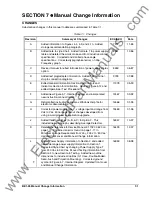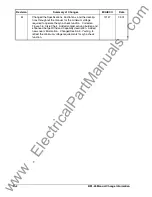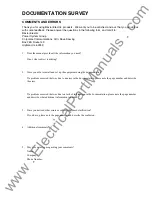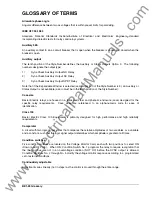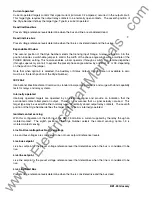
5-2
BE1-25 Testing
MULTIPLIER SWITCH IN "X0.1" POSITION
0.5
MAXIMUM SLIP
FREQUENCY IN HZ
10.0 1.0
9.0 0.90
8.0 0.80
7.0 0.70
6.0 0.60
5.0 0.50
4.0 0.40
3.0 0.30
2.0 0.20
1.0 0.10
0.9 0.09
0.6 0.06
0.4 0.04
0.8 0.08
0.7 0.07
0.5 0.05
0.3 0.03
0.2 0.02
0.1 0.01
0.09 0.009
0.08 0.008
0.07 0.007
0.06 0.006
0.05 0.005
0.04 0.004
0.03 0.003
0.02 0.002
5
10
15
20
25
1.0
1.5
2.0
2.5
TIME DELAY SETTING IN SECONDS
MULTIPLIER SWITCH IN "X1.0" POSITION
PHASE ANGLE
SELECTOR
SETTING
THIS FIGURE ILLUSTRATES THE MAXIMUM SLIP
FREQUENCY ASSOCIATED WITH VARIOUS
SETTINGS OF TIME DELAY AND PHASE ANGLE.
ADDITIONAL POINTS CAN BE PLOTTED USING
THE FORMULA:
F =
S
2 X PHASE ANGLE SETTING
360 X TIME DELAY
SLIP FREQUENCY IN HERTZ. SLIP
FREQUENCY INCREASES WITH A LARGER PHASE
ANGLE SETTING AND WITH A SHORTER TIME
DELAY SETTING.
80
40
20
10
BE1-25
D1058-08
2-18-92
F =
S
WHERE
Figure 5-1. Maximum Slip Frequency Versus Time Delay and Phase Angle Settings
Condition and Mode Switches
Detailed instructions and precautions for programming the Mode switches and Condition switches are
provided in Table 2-1, callouts R and S. The location of the switches is shown in Figure 2-2.
When output contacts of both Sync and Voltage Monitor functions are wired in parallel, the live line/live
bus Condition Switch No. 2 must be in OFF position. Otherwise the Sync function will be overruled. If the
condition switches are external (option 2-C, 2-U, or 2-V), the external LL-LB switch should be omitted
when Sync and Voltage Monitor contacts are in parallel.
www
. ElectricalPartManuals
. com


























